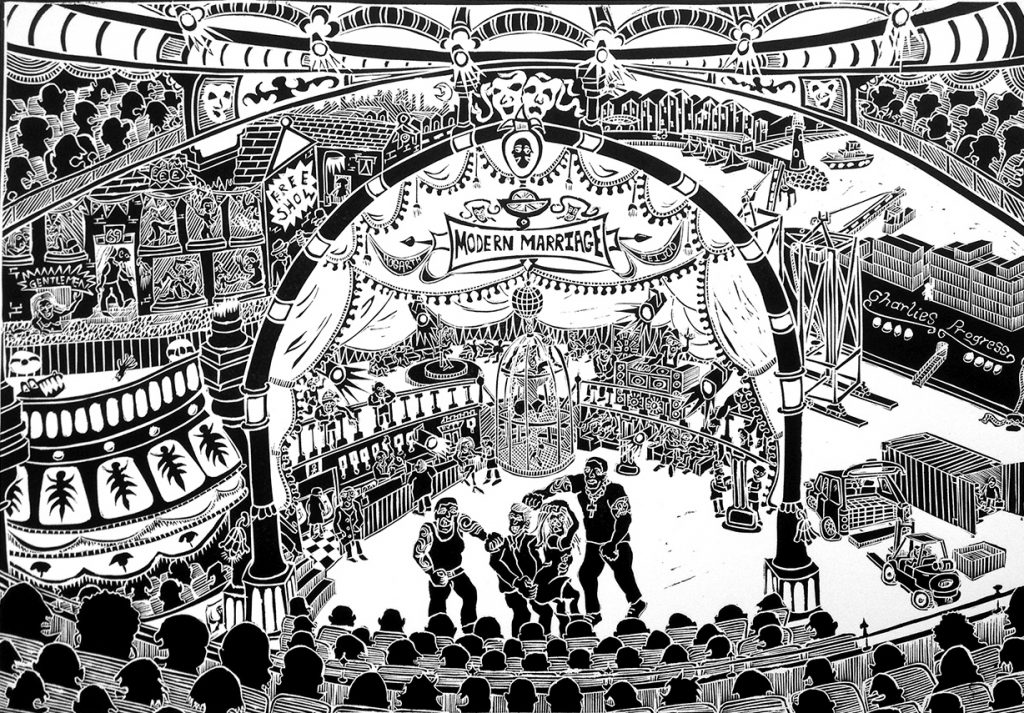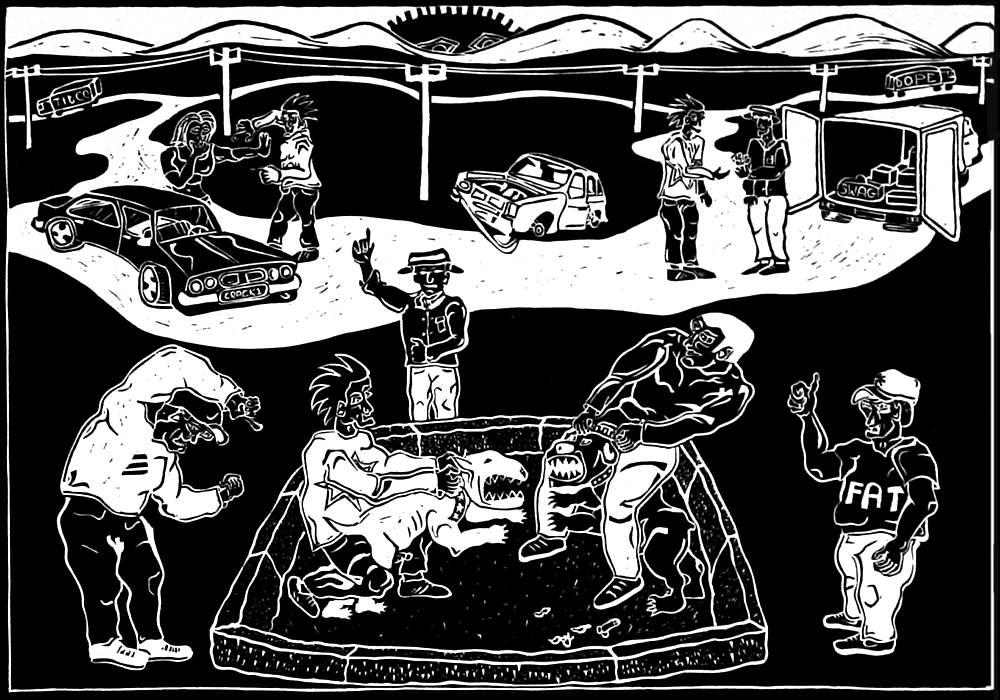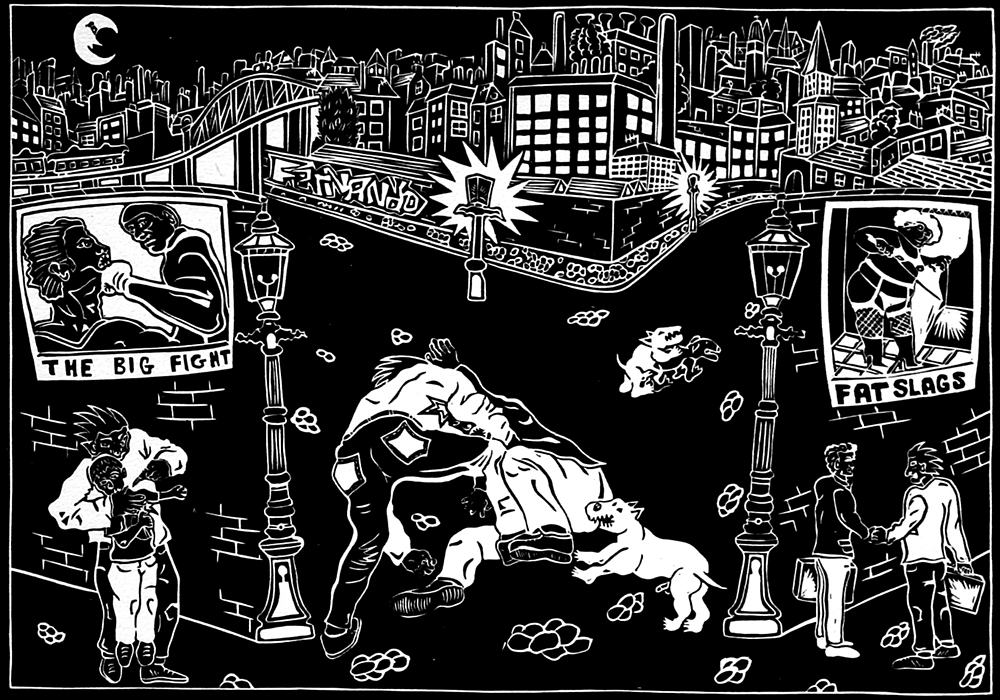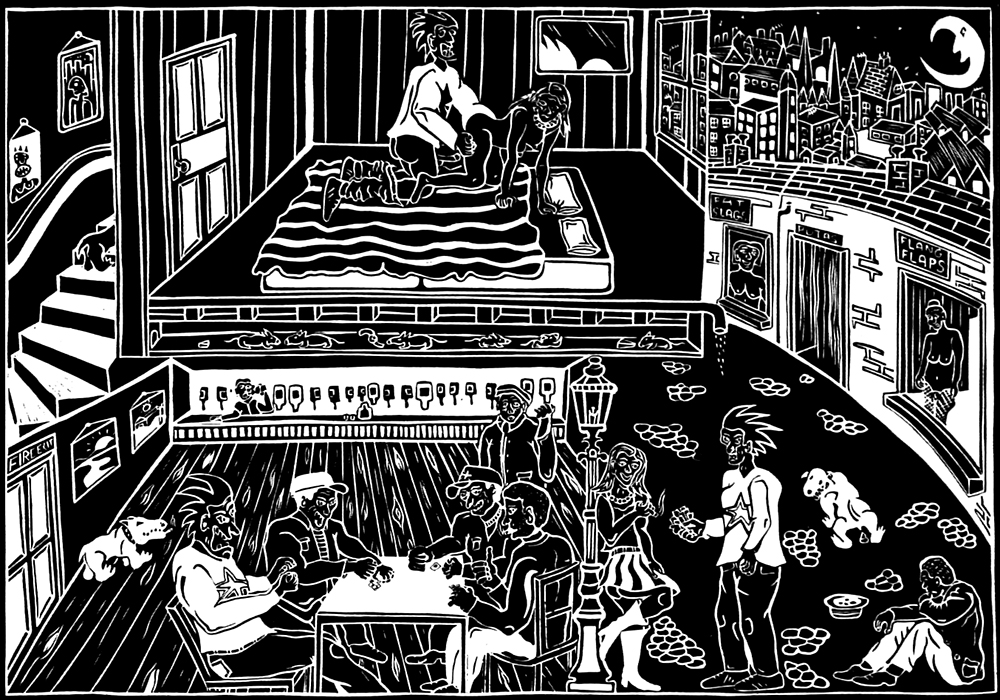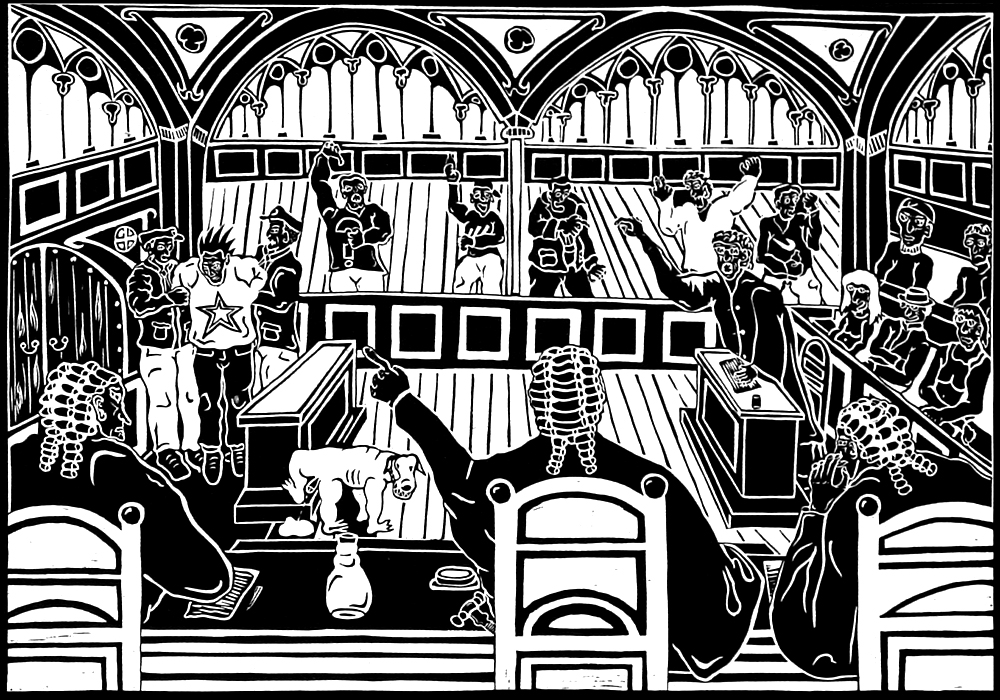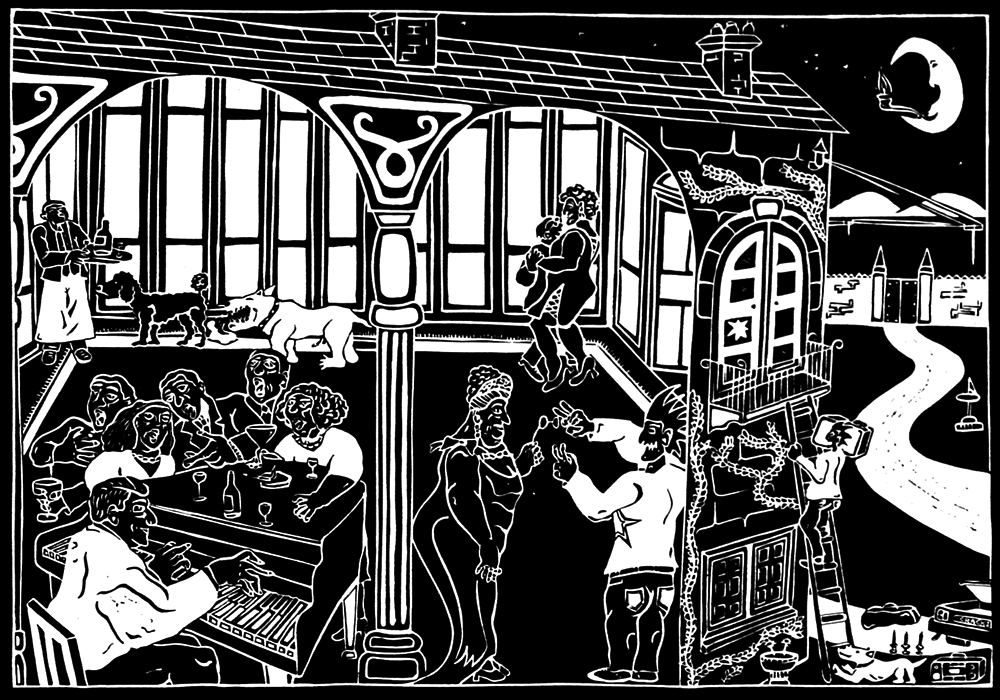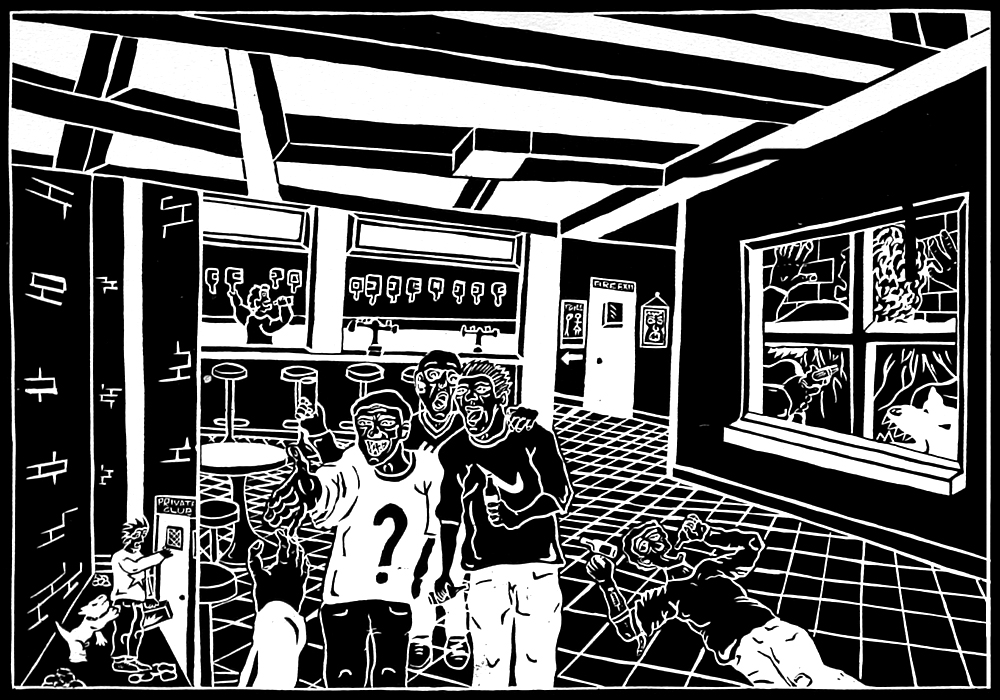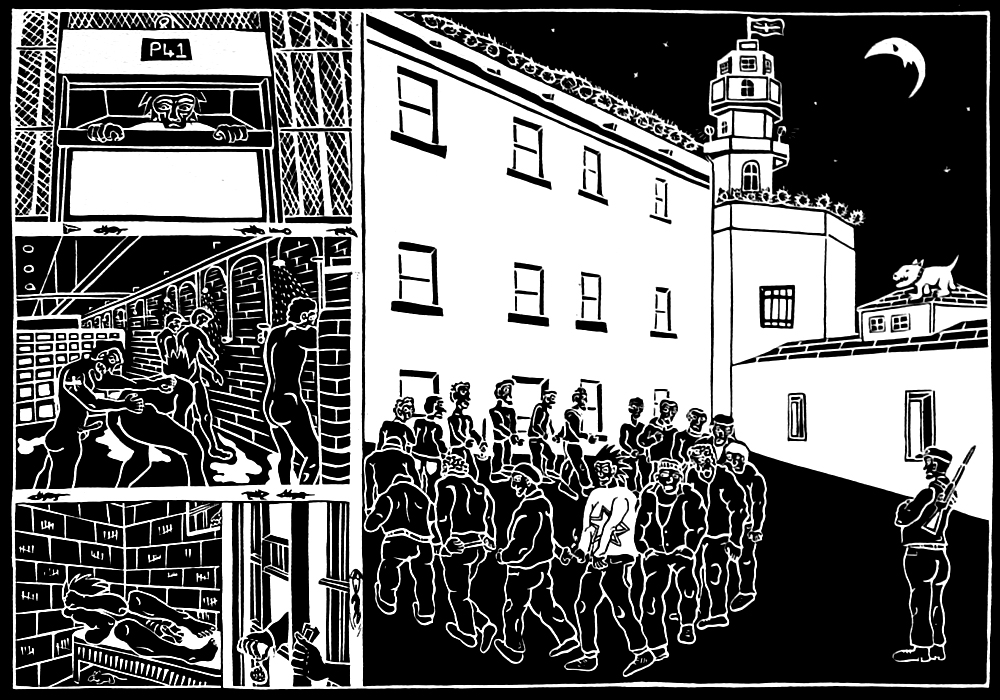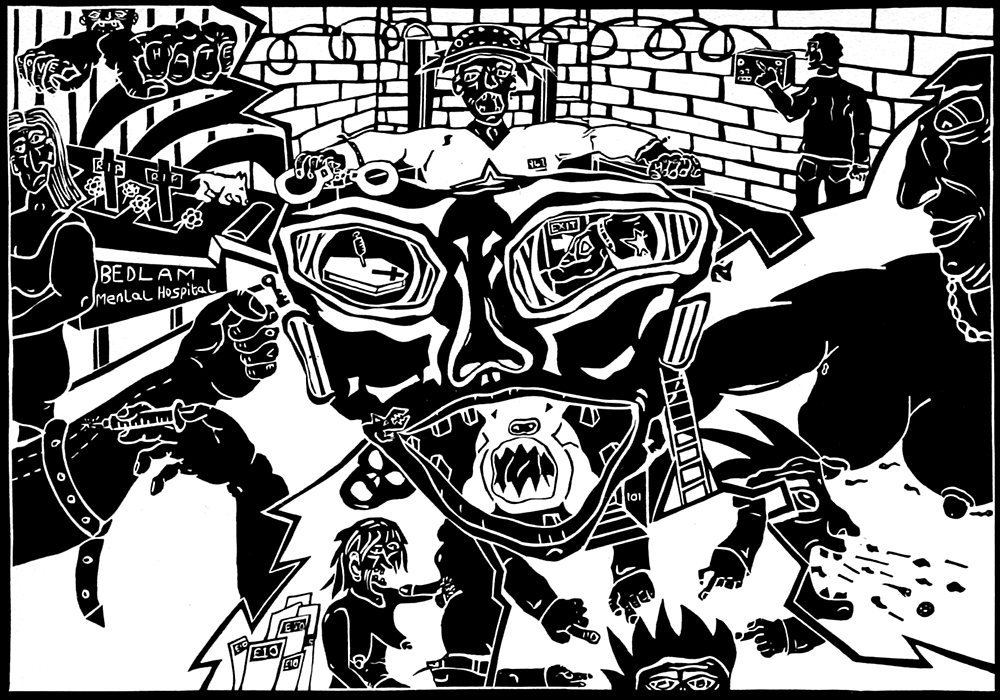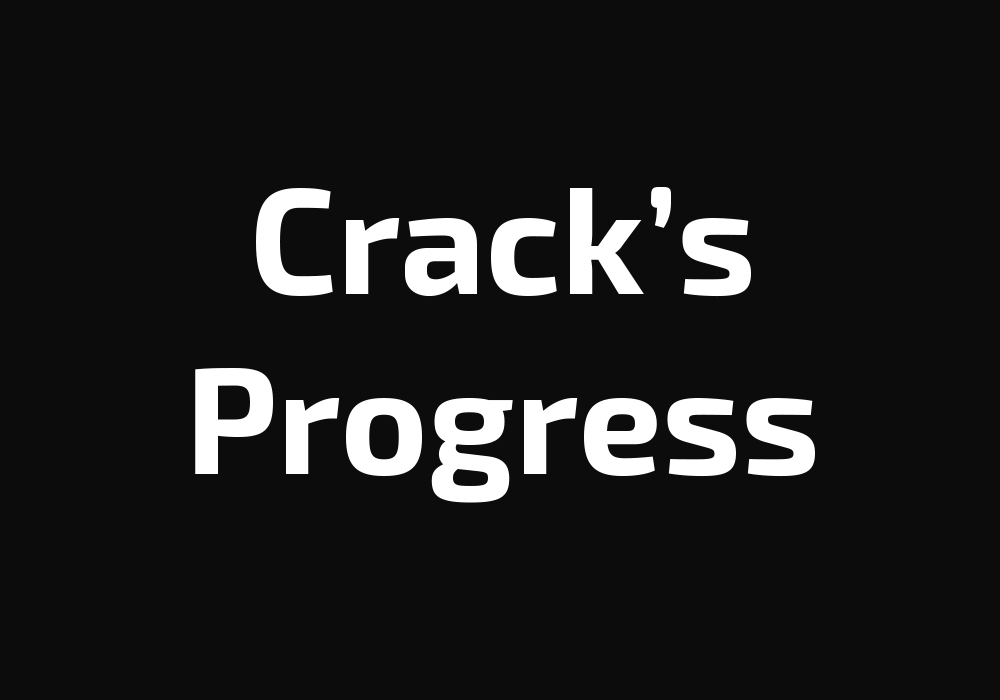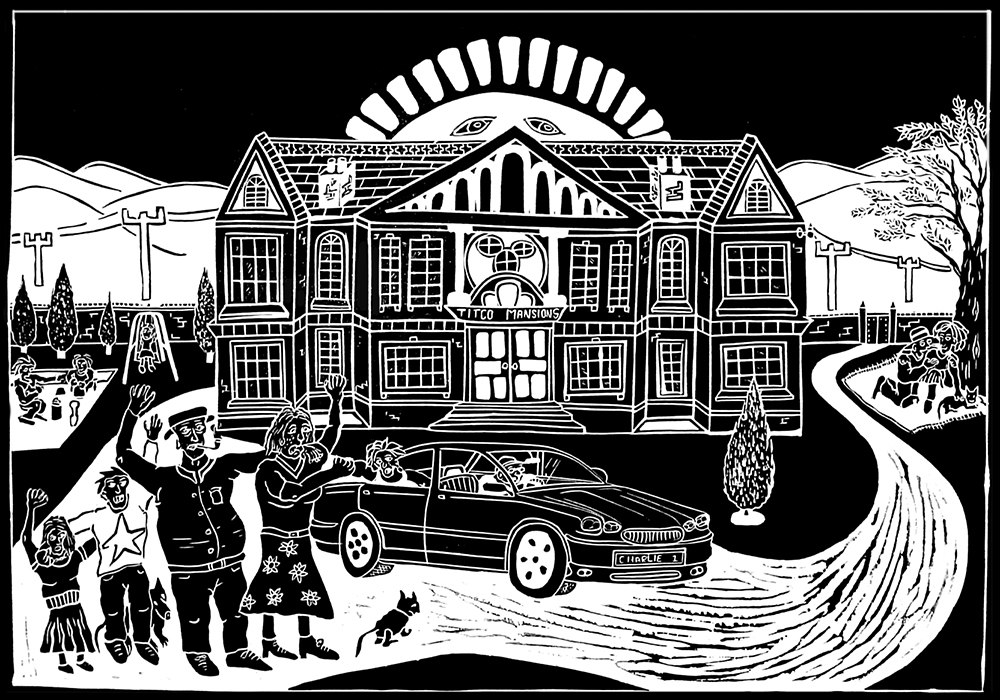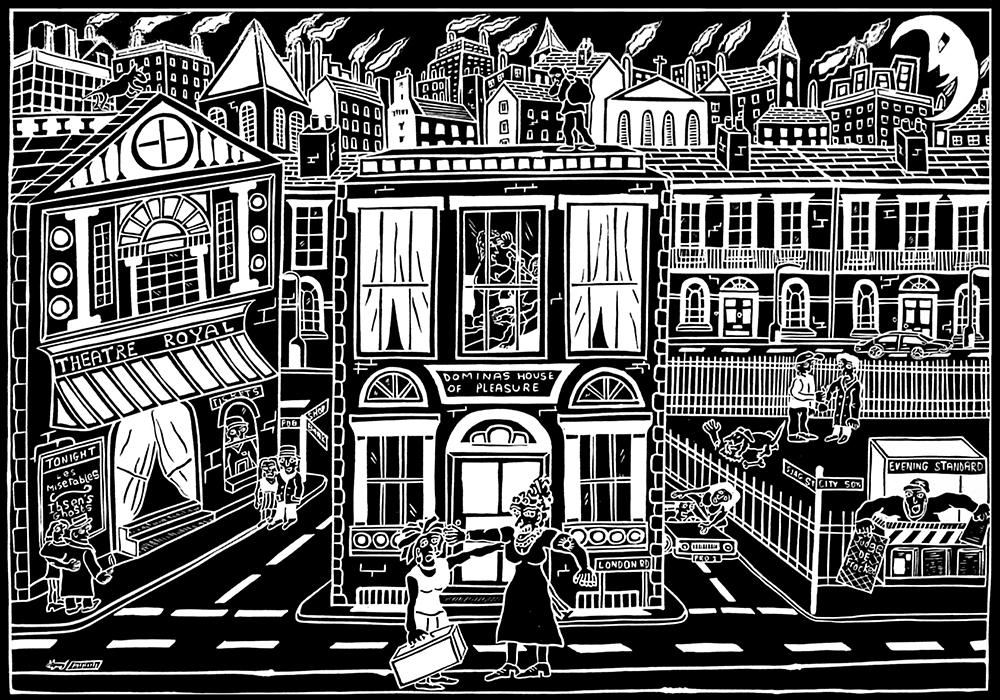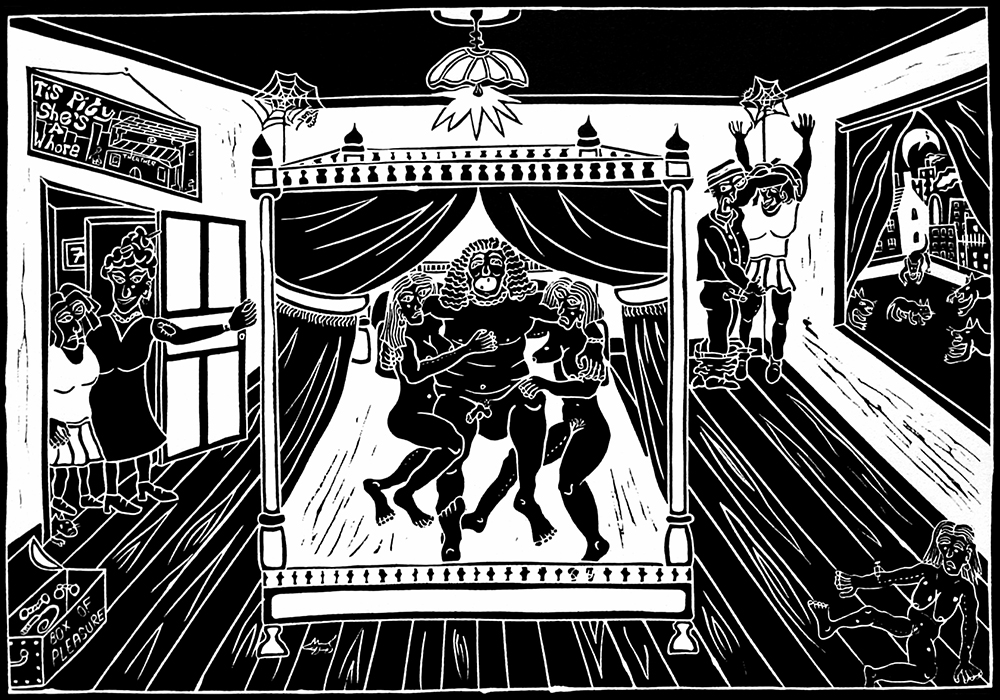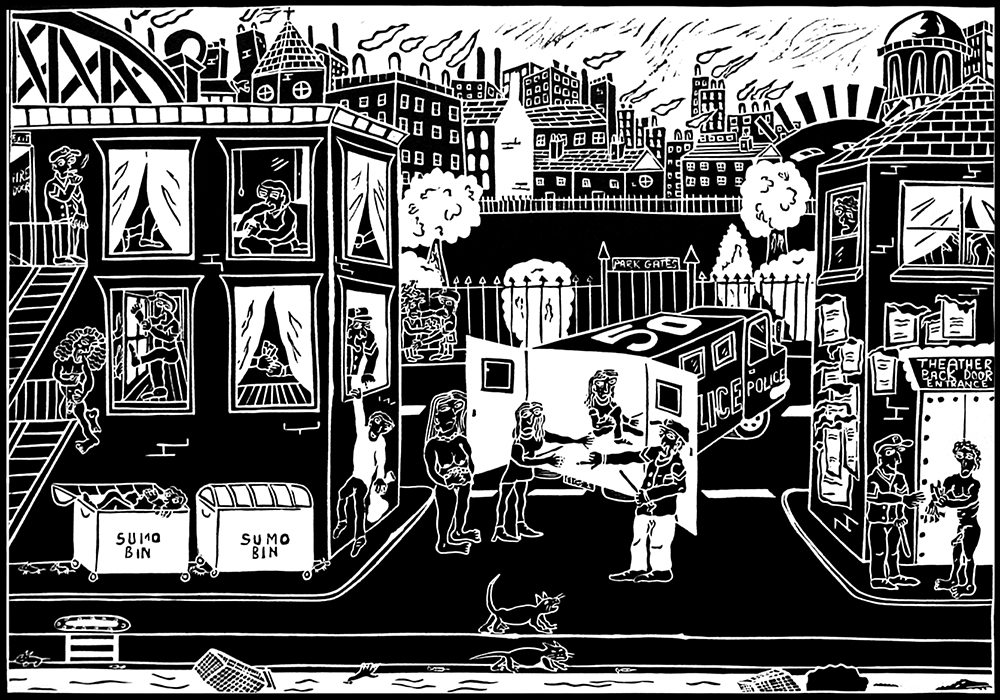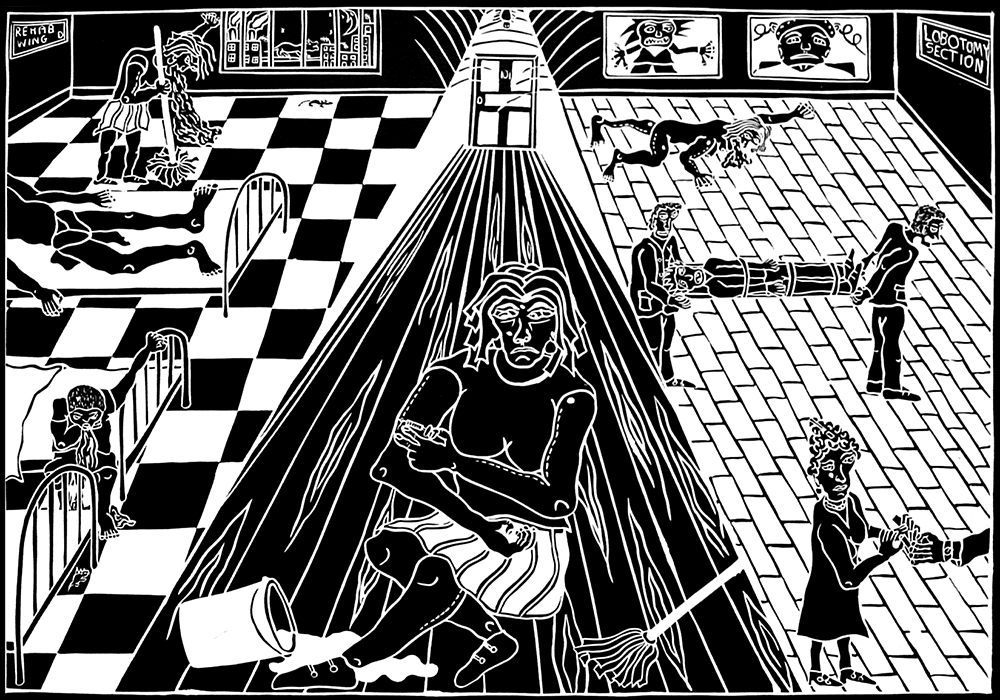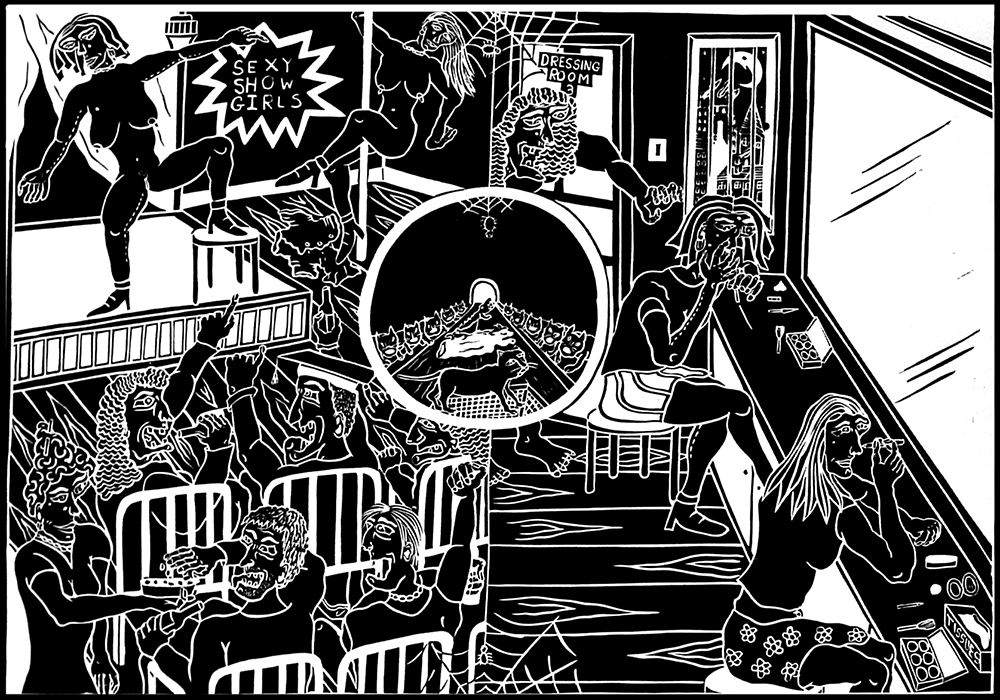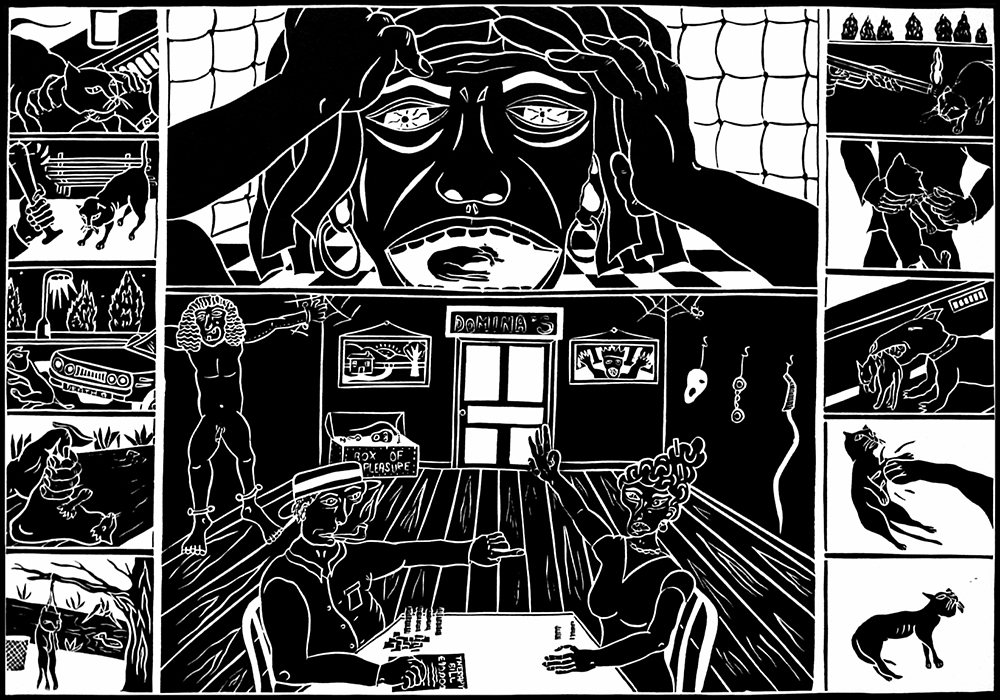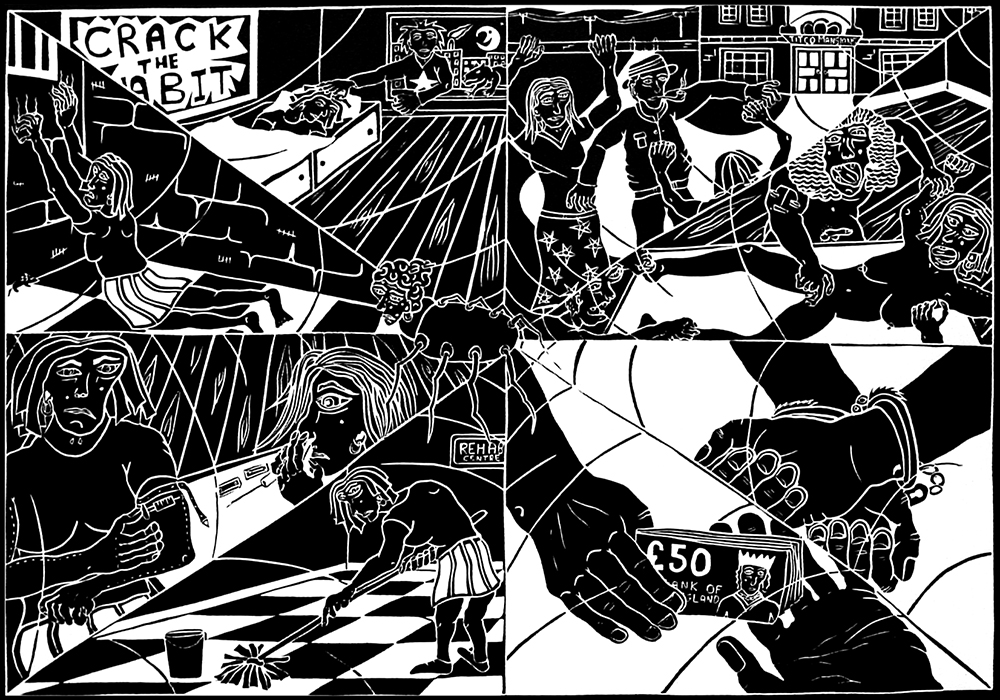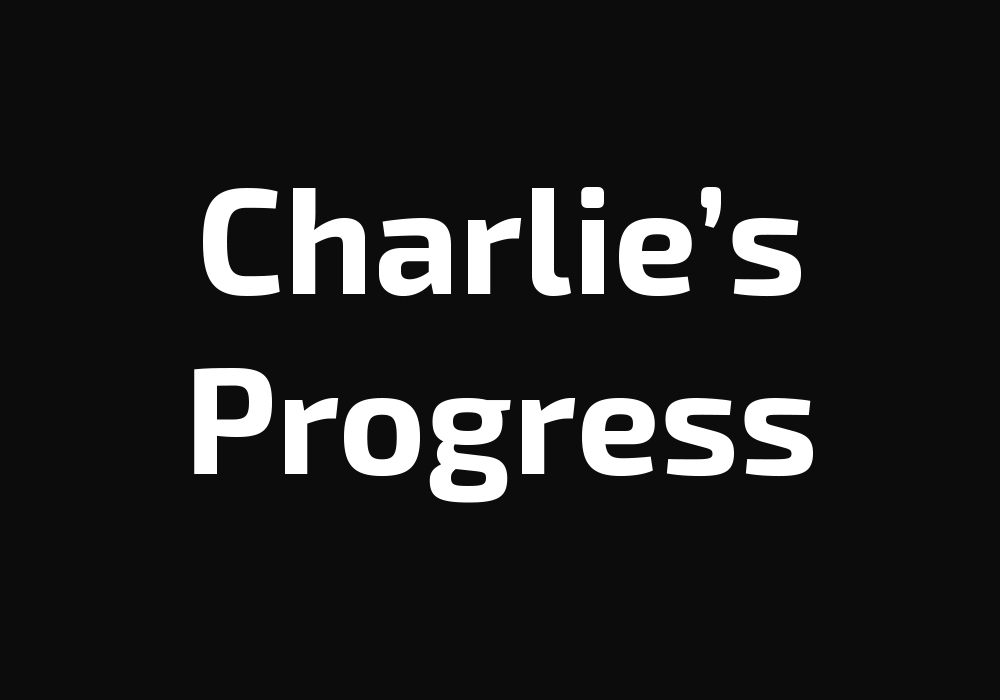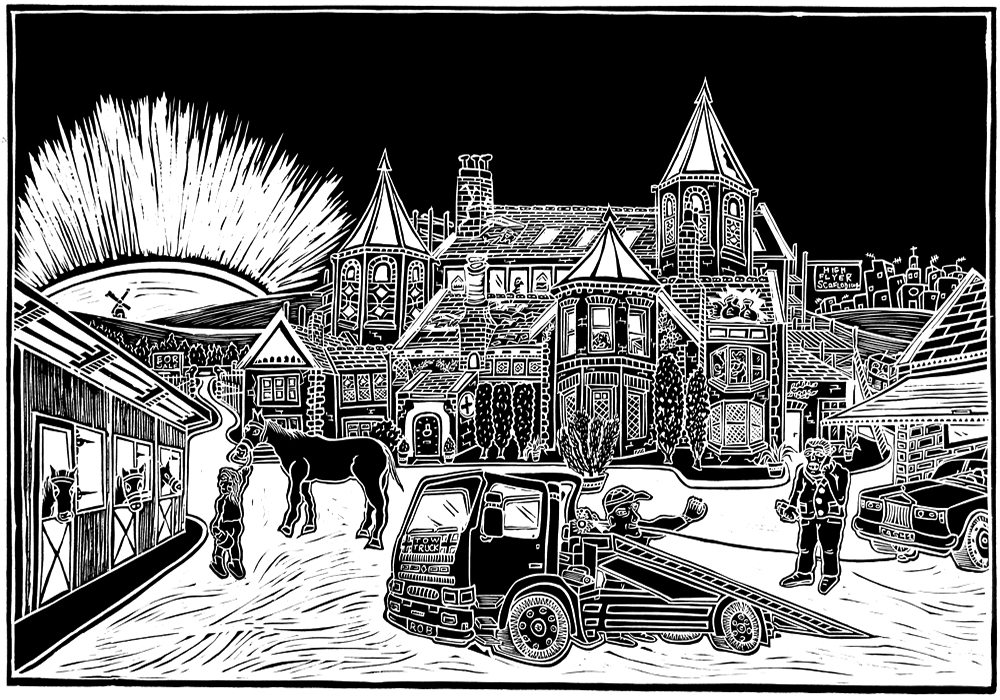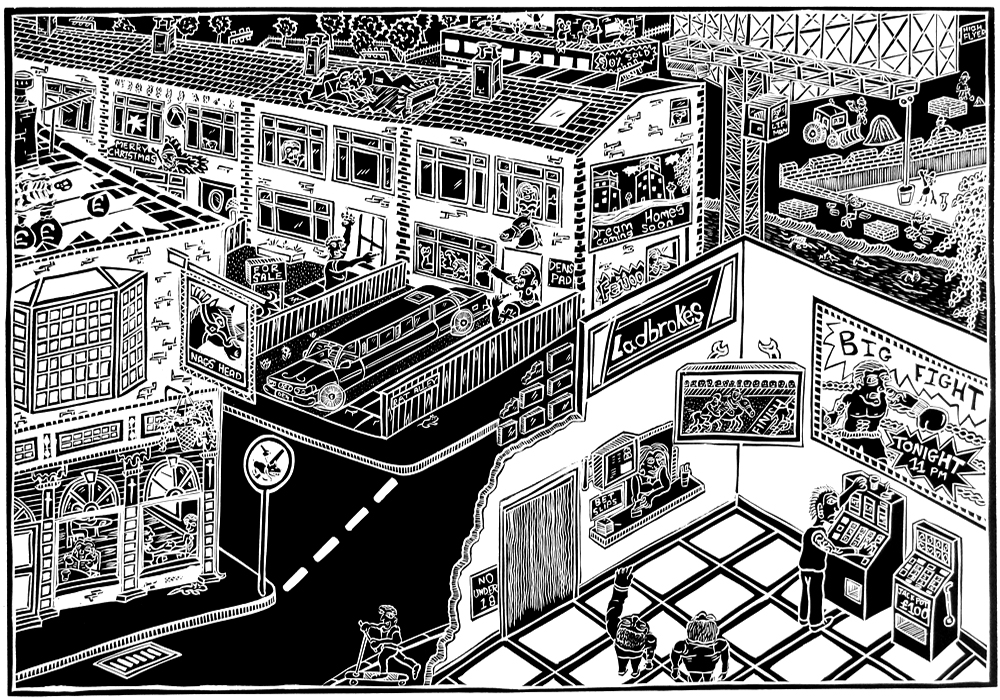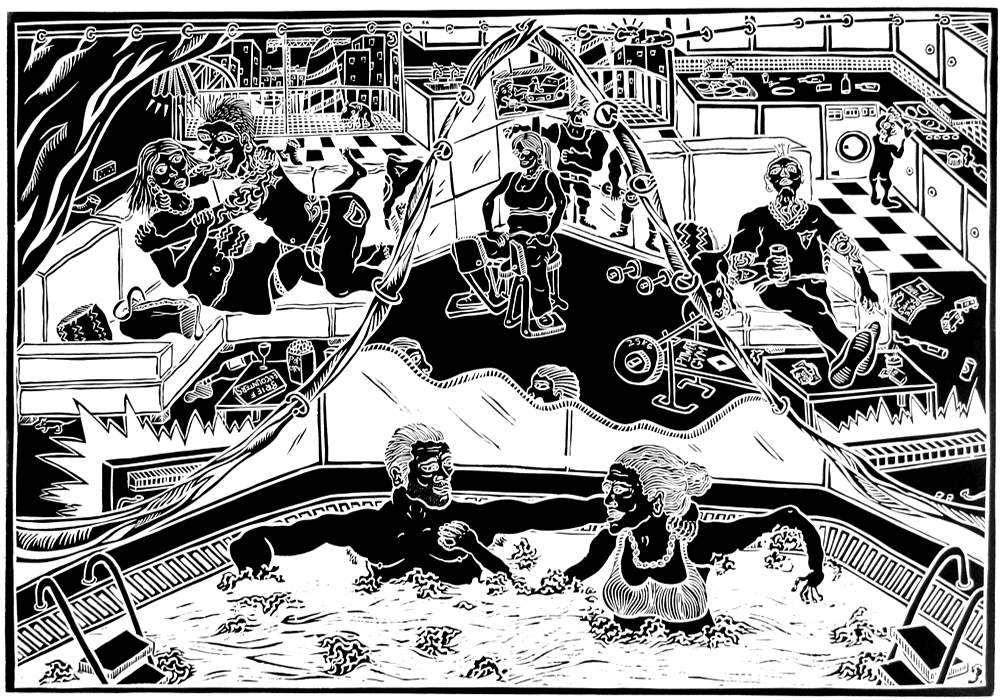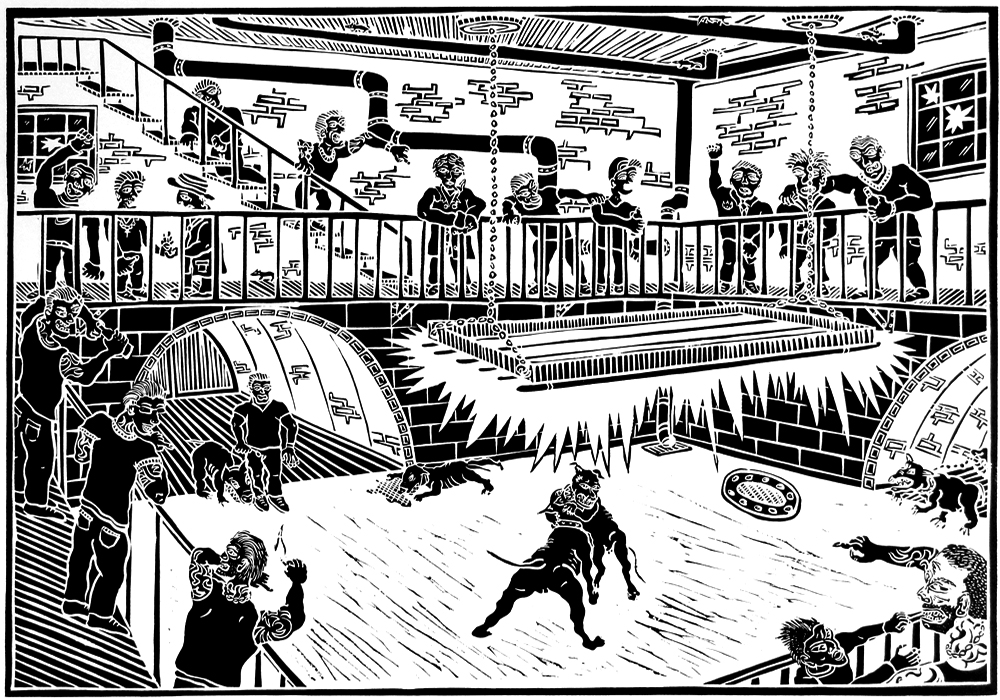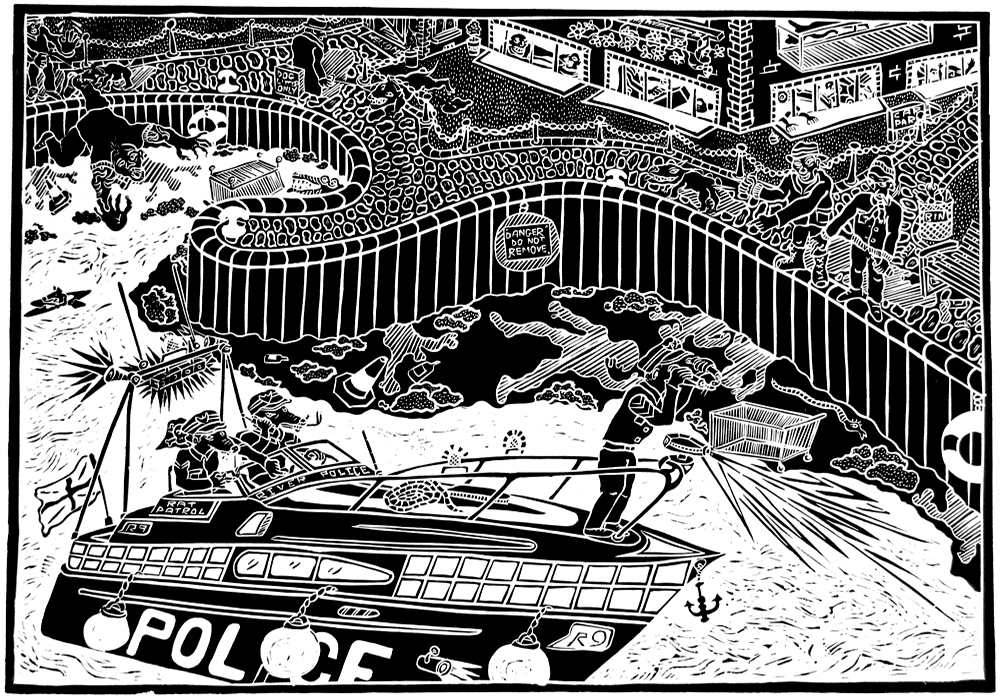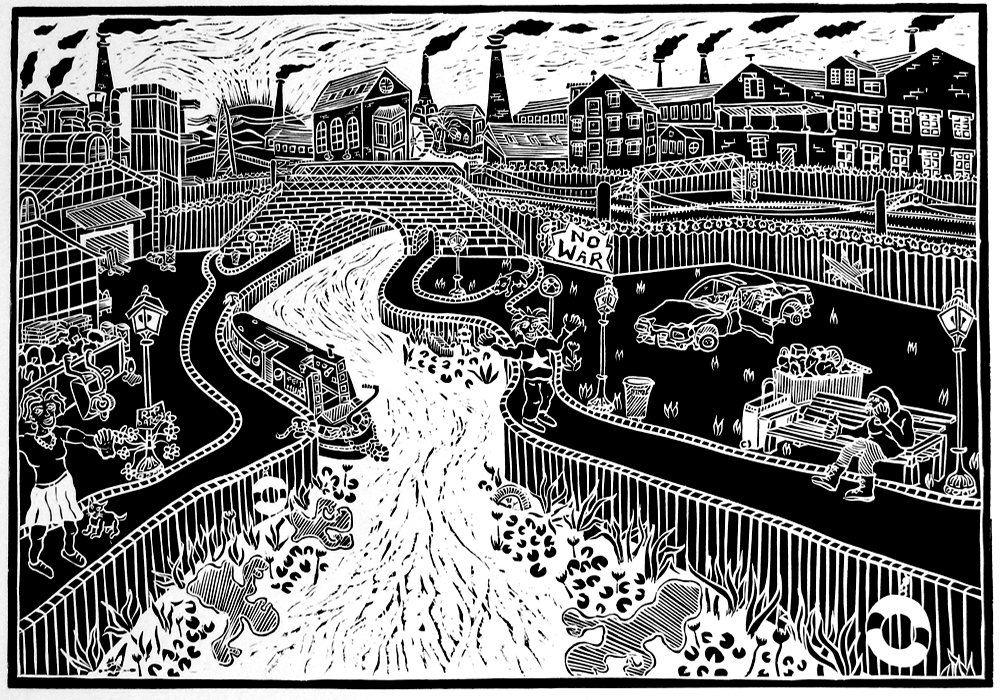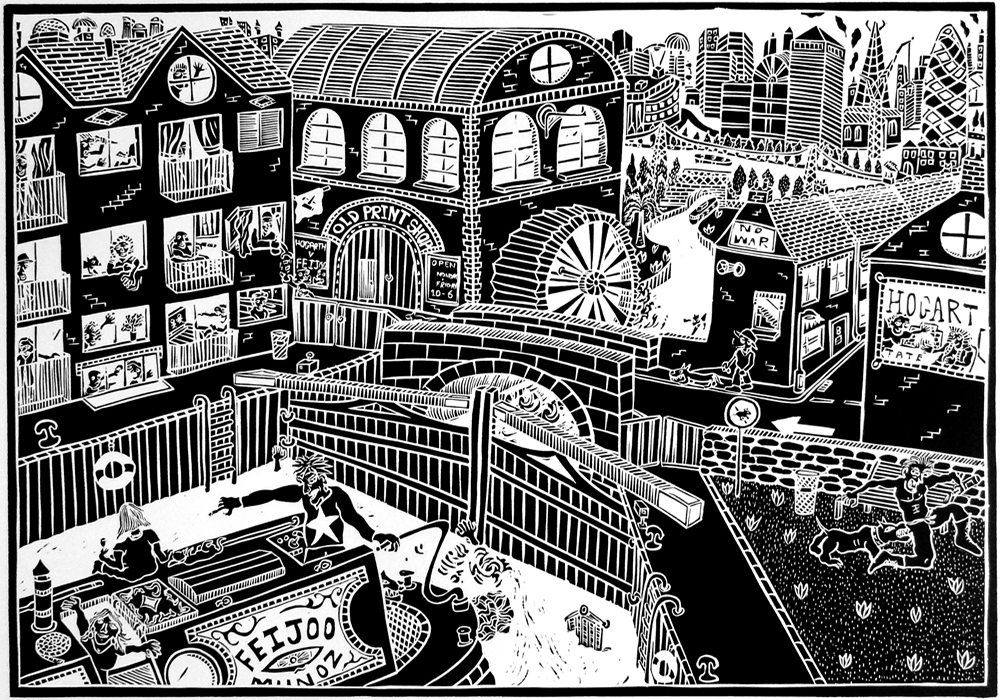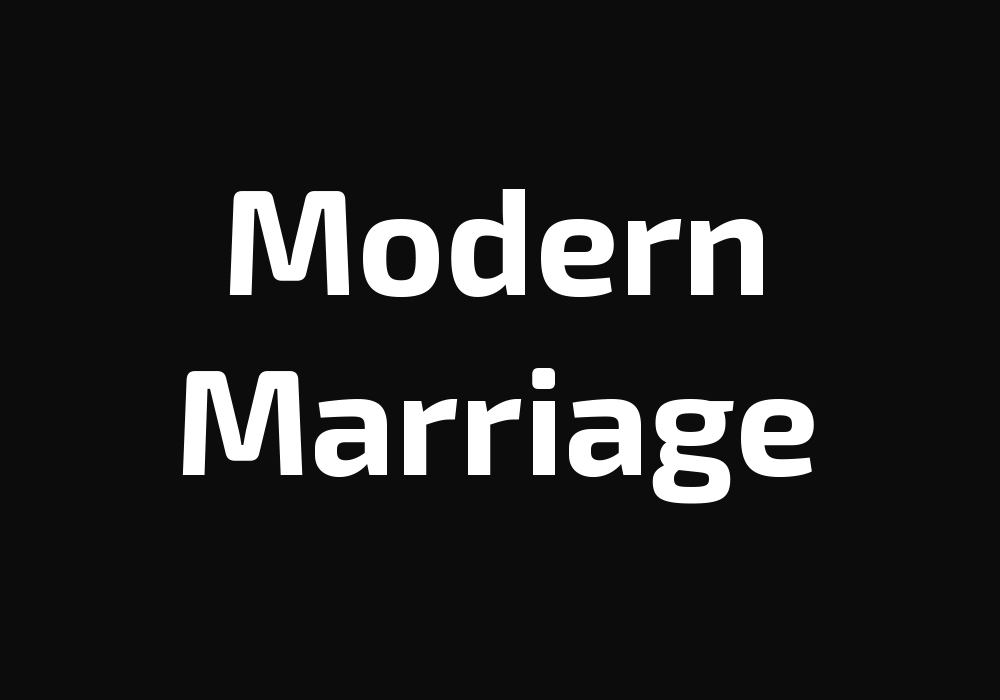The Frontispiece to Crack’s Progress, Charlie’s Progress and A Modern Marriage.
With references to the inspirations from William Hogarth, this tableaux of the trilogy encapsulates moments, peep shows, and frozen actions from the epic saga of Crack and Charlie and their family.
In the spotlight are the main characters. Under the Tragedy and Comedy masks, those symbols of the playhouse which underpin the theatre of life, we focus in on the rehearsals and performances, the onstage backstage interactions, the roles that are assumed, the deaths that are played out under the floodlights, in the dark recesses of the stage, or out in the city.
A proscenium arch encompasses the action but also includes the audience in the story – they participate and applaud, cheer and boo, approve and disapprove. It is their story too: they see their lives reflected back in the fiction before them. Behind the big show are all the little details: the rats, the violence perpetrated behind the windows, the double dealing in dark alleys, the debris floating in the undercurrents of the river, the scandalous skyscrapers, and the streetlights despairing at the life and death enacted beneath their columns.
The greatest show on earth: the theatre of life and death.
A progress from dark to muted light.
Crack’s Progress
A modern narrative based on William Hogarths – A Rake’s Progress
Loosely based on Hogarth’s A Rake’s Pogress this is a modern fable of dark morality and crime and corruption. Crack, with his faithful dog Spike, fight and bite and deal in drugs. Using contemporary slang and rap rhythms the tale is told of the descent into the grim underbelly of society with the use and abuse of women as well as substances, but finally Crack is caught. He is convicted in a trial scene, depicted in the strong fourth frame. He comes out of prison further corrupted and continues, but is finally driven crazy by his drug habit and he kills. He is sent to Bedlam (with more than a nod to Hogarth) and, in the final frame, a mad Crack appears to die. But the final Full stop is not the end.
Each of the eight frames has layers of meaning layers of narrative – the rats in the sewers, the multiple stories of other minor characters, the dissolution of morals at all strata of society. Many visual links are made to Hogarth and other key artists such as Goya and Masereel.
Charlie’s Progress
A modern narrative based on William Hogarths – A Harlot’s Progress
This second tale is inspired by Hogarth’s A Harlot’s progress. Charlie, Crack’s sister, is more rooted in the family background as the opening scene shows the ‘faux’ nouveau riche mansion of her father. Her trip to London reveals the dark low life of London with drugs and violence as the norm. The corruption at the top of society is lampooned, but the victim is Charlie and also her younger sister Tara. Both girls are viciously exploited by their aunt – seen as like a black widow spider. Charlie recovers, painfully, from her addiction and seeks help from her brother Crack, in the final open-ended scenes.
Just as Crack had a companion, a dog called Spike, who was hard and murderous, Charlie has a cat, Flora who has kittens, but cruelly they are all slain in an indictment of aspects of society’s continuing attitudes to women and children.
Modern Marriage
A modern narrative based on William Hogarth’s – Marriage A-la Mode
A Modern Marriage had a longer evolution and proved more complex to interpret for a contemporary audience – even the title creating difficulties in how it would relate to ‘progress’ and to modern marriage patterns. Changes also occurred in the telling and drawing together of the Progresses with the interweaving of print and publishing through visual and textual references.
In scene one the viewer is introduced to Tara, a spoilt brat, who poses with her horse, as her father’s business empire is threatened and a luxury car is towed away. In contrast, scene two is set in the back end of the city where Den and his son Darren exist. But while Den thrives through a range of nefarious activities, he needs money laundering contacts and friends in the higher rungs of society. Darren is a waste of space. The two fathers come up with a deal and marry off the two youngsters. Thus ‘real rich’ meets ‘nouveau riche’: the eternal devil’s knot. Set in the environment of desirable waterside apartments (despite the rank mud and the view of wrecks) Tara and Darren conceive a child, Wayne, but also fall back into their dissolute ways.
In scene four young Wayne is neglected and sees sights of crime and horror, exemplified by the illegal dog fight. Darren gets into horrendous debt and from the bottom of the pit to which he has sunk sells his wife and son into pornography. But even this deal goes bad and he is murdered. Shocked into consciousness and blaming herself Tara decides to end her own life and that of her wayward son. But their fall is caught by Tara’s older brother and sister, Crack and Charlie. There are some signs that there may be redemption for all at last.
Bringing the three siblings together and connecting their lives to the redeeming powers of writing, teaching, art and parenthood, links are created to the artist and the stories, and also frame the series, which is finally printed, blocked and boxed.
